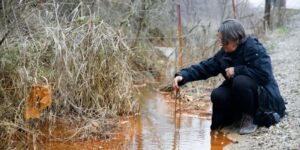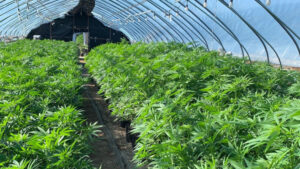
A lack of food is leading to the decrease and possible extinction of the monarch butterfly.
According to State Impact, habitat loss and the use of herbicides, which can kill milkweed plants, have caused the monarch butterfly population to drop 90 percent over the last 20 years.
“I love seeing monarch butterflies every year and I’ve never really known or paid close attention to see a decrease in them every summer,” sophomore Chelsae Folsom said.
Professor of Biology Al Mikell owns five acres of land in Luther, Oklahoma and said the cause of the decrease in the butterfly population can be misleading.
“People that study the butterfly have determined that it’s the lack of food source rather than poisoning,” Mikell said. “We have not poisoned the butterfly, we just don’t have as much food for it.”
The possible extinction of pollinating insects extends beyond butterflies.
“I’ve seen the monarchs and the milkweed and part of the migration,” Mikell said. “We’re worried about pollinators, all pollinators, which means the decrease in bees as well.”
Milkweed has been decreasing in number due to pollution and urban growth, according to Mikell.
“The issues seem to be that there’s habitat destruction that’s affecting the population of the monarch butterflies,” sophomore Colin Prevatt said. “And so we’re trying to put forth an effort to preserve for a monarch population, so it can recover.”
Because of the decrease in butterflies, it is important for people to look after the environment, Prevatt said.
“It seems like if we don’t take some responsibility we could end up wiping out the entire population,” Prevatt said. “Just in general we’ve killed a lot of species. I think a lot more than people realize. … In order to create farms we destroy other wildlife habitat and I feel that we do have a sense of responsibility of maintaining the habitat of the butterflies.”
Prevatt said the decrease in butterflies also tied consumerism.
“As the population grows there’s a greater need for people to produce in order to provide for other people,” Prevatt said. “And quite often that’s after the extinction of wildlife or habitats.”
The destruction of food sources to make room for human expansion is affecting the butterfly population, Mikell said.
“Milkweed is a good food source for the developing butterflies,” Mikell said. “I’ve actually planted them before. I just was unaware that we were on the flyway.”
The decrease in the Monarch colonies could lead to problems in the future.
“It could lower our productivity,” Mikell said. “It could lower our food for acres.”
Mikell said people can help with the issue by planting milkweed for butterflies in their personal gardens and lawns.
“A lot of people will say that it’s just one species, that it won’t have a lot of impact, but people often don’t think about the effect that it will have upon other species and populations,” Prevatt said. “Really the ecosystem is held in a balance and if we disrupt that balance — it’s going to effect much more than just the one species that we’re trying to protect.”













Be First to Comment